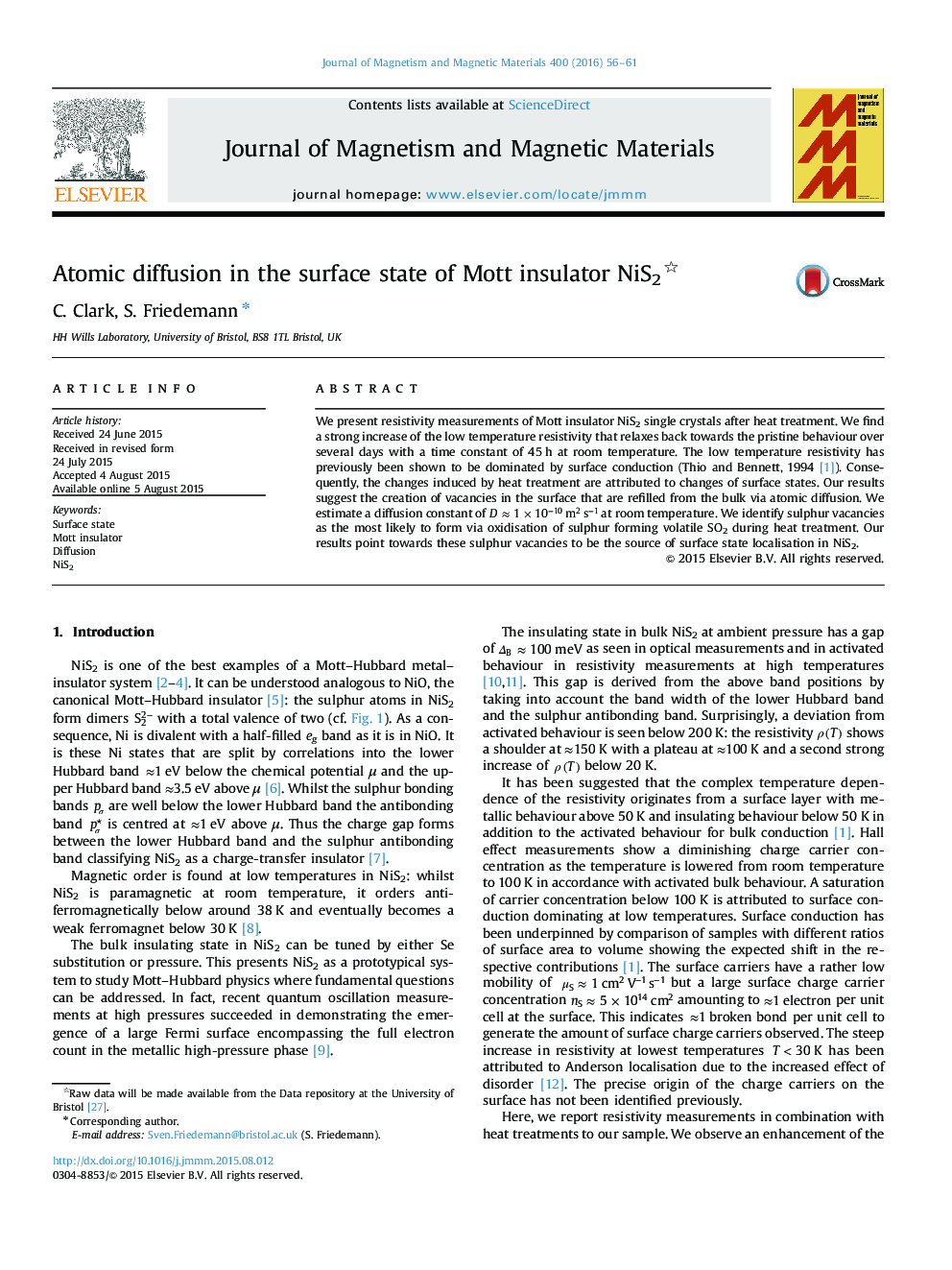| Article ID | Journal | Published Year | Pages | File Type |
|---|---|---|---|---|
| 1798379 | Journal of Magnetism and Magnetic Materials | 2016 | 6 Pages |
•We measure the resistivity of NiS2 single crystals heat treated at 150 °C.•We discovered an increase and relaxation of the resistivity over several days.•Changes are limited to the temperature range associated with surface conduction.•We model relaxation with diffusion of sulphur from the bulk to the depleted surface.
We present resistivity measurements of Mott insulator NiS2 single crystals after heat treatment. We find a strong increase of the low temperature resistivity that relaxes back towards the pristine behaviour over several days with a time constant of 45 h at room temperature. The low temperature resistivity has previously been shown to be dominated by surface conduction (Thio and Bennett, 1994 [1]). Consequently, the changes induced by heat treatment are attributed to changes of surface states. Our results suggest the creation of vacancies in the surface that are refilled from the bulk via atomic diffusion. We estimate a diffusion constant of D≈1×10−10m2s−1 at room temperature. We identify sulphur vacancies as the most likely to form via oxidisation of sulphur forming volatile SO2 during heat treatment. Our results point towards these sulphur vacancies to be the source of surface state localisation in NiS2.
